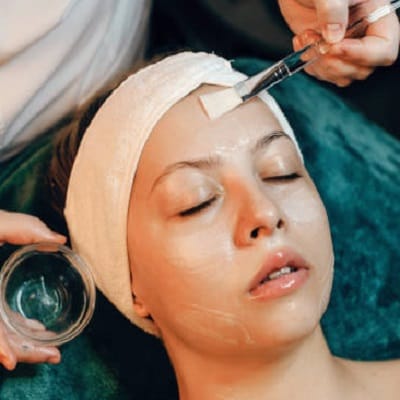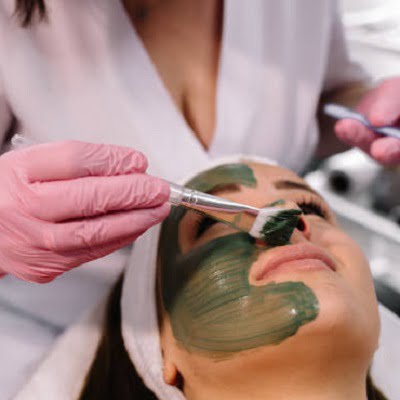
Chemical peels are a well-loved skin solution for revitalizing the skin and eliminating imperfections including acne scars, hyperpigmentation, and fine lines. Chemical peels in Islamabad are one of the most common procedures. So it is logical to ask how many sessions are required to get the expected outcome.
What is a Chemical Peel?
A chemical exfoliation is a cosmetic technique that works by using a chemical exfoliate solution to reform the skin surface. The procedure causes the old damaged peel, making way for new skin tissue to grow underneath.
Light Peels: These are types of peels whereby alterations only affect the outermost part of the epidermis.
Gentle peels: Used to penetrate deeper surface layers and are acceptable for combating moderate skin abnormalities.
Deep Peels: The most powerful peels that work on the deeper layer of peel and are suitable for the most serious problems.
Chemical Peel And The Number Of Sessions Required:
The type and number of consultations needed for a peel depend on the peel and the initial and desired condition.
Superficial Peels
It uses the least concentration of chemicals, which include alpha hydroxy acids like glycolic and lactic acid. For topical agents to be effective for skin toning, brightness, and fine epidermis pigmentation, they should be used.
Recommended Frequency: Superficial peels are less invasive and thus can be done frequently, normally after 2-4 weeks.
Number of Sessions Needed: In case of visible alteration, it is advisable to schedule 4 – 6 meetings within the successive months.
Medium Peels
These work with a more massive concentration of chemicals such as trichloroacetic acid (TCA). These peels are ideal for individuals with mild to moderate acne scarring, hyperpigmentation, and wrinkles.
Recommended Frequency: Most people opt for medium peels and these should be done every four to six months depending on the state and the patient’s skin tolerance.
Number of Sessions Needed: The majority of users take 2-4 consultations to experience the desired changes. During each meeting, the concentration of substances is stronger, resulting in more intense meetings and increased skin renewal.
Medium peels are slightly deeper and usually cause the epidermis to shed and look reddish for about 3-5 days. This type of peel is perfect for the people who need change, but do not want to go deep and get very intense treatment.
Deep Peels
The deepest of all exfoliants is also the most harsh because it typically employs phenol in its formulation. They work as far as the derma and are ideal for removing severe wrinkles, deep pimple scars, and severe sunburn.
Recommended Frequency: This type of peeling is usually done once or after very many years because their results can last for several years.
Number of Sessions Needed: Deep peels are highly invasive; they are typically administered once unlike other successive peeling treatments.
Factors Affecting the Number of Sessions:
Several factors can influence how many consultations are necessary:
Skin Type: Due to the thickness and sebum levels of the epidermis people with thicker and oilier skin go for many sittings while those with sensitive one may not require many sittings as their skin could get irritated easily.
Skin Concerns: For instance, fine pigmentary changes may just fade away with a few ‘super feces’ while the underlying scarring may need medium or even deep peels to optimize the success.
Desired results: Some people want the changes to be incremental, while others want it to be drastic. The peel required will be dependent on the targets and goals that you set for your skin.
Aftercare and Maintenance: The process of aftercare is essential to enhance the outcomes and to prevent the adverse effects of peptides in the peel. It will also help to follow a proper skincare routine, and minimize exposure to strong sunlight to prevent aging hence may not require frequent meetings.
Length of Recovery and Expected Recovery:
The recovery period for chemical peels varies based on the type:
Superficial Peels:
There is also minimal epidermal reddening and slight skin peeling that takes less than one day or within the following 24 hours. The downtime depends on the type of peel being used, and it is typically minimal or nonexistent.
Medium Peels:
The process normally lasts from seven to ten days, and the peel after the procedure may be covered with a layer of peeling and redness. At this time, you should take special care to cover your skin and avoid direct sun exposure.
Deep Peels:
This procedure may take up to several weeks to heal, and the skin will remain red, and sensitive, and may peel off. Remedial care is important because the epidermis is sensitive to sunburn and infection during the process of healing.
Final Thoughts:
The duration of this treatment will depend on the type of chemical peel done, and the reaction of your skin. If you’re unsure about which facial peel to choose and how many sessions you need. You should visit a professional for advice from SKN Cosmetic in F-7 Islamabad and consult our best aesthetic physician for the best results.



